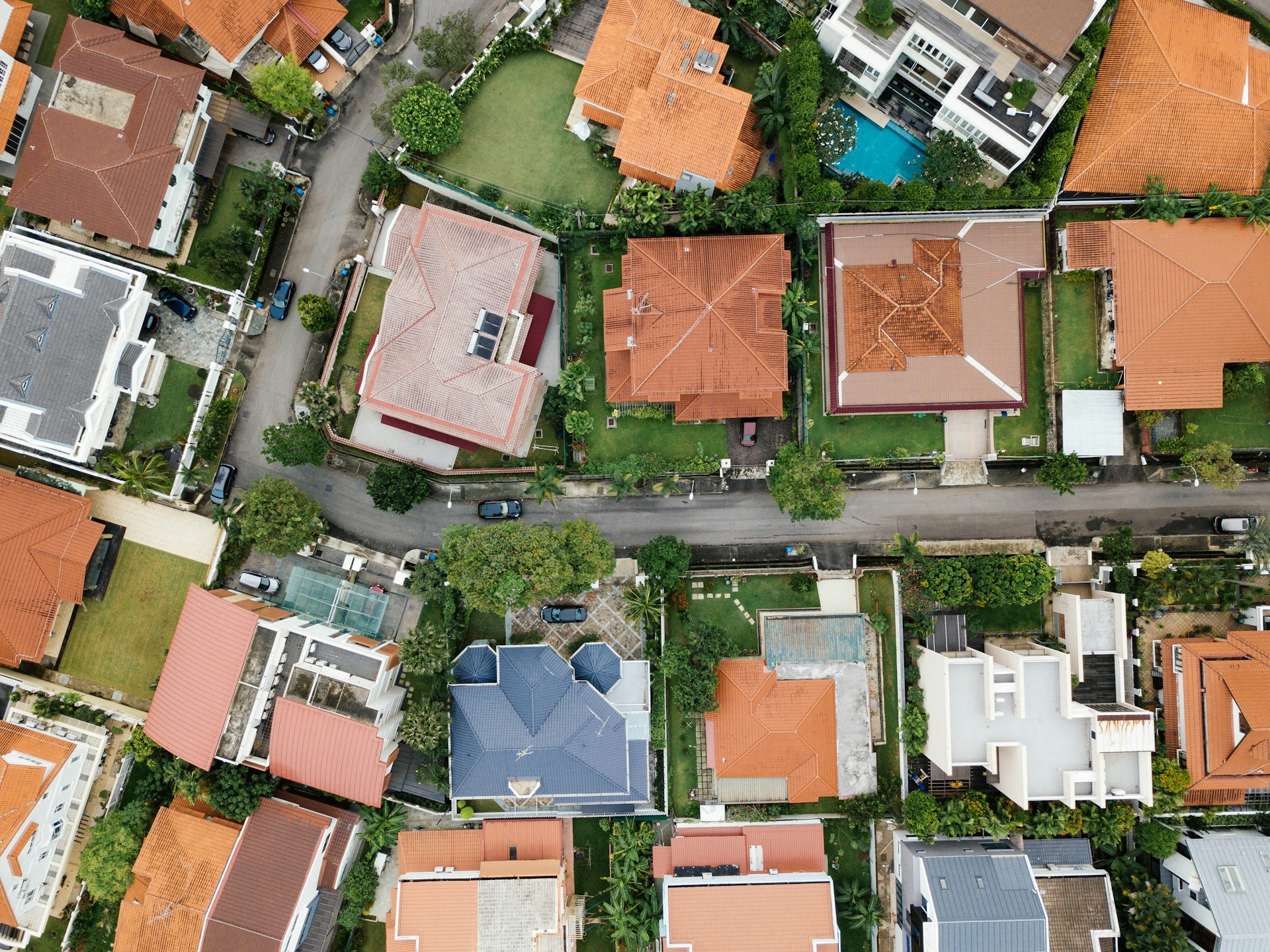In the wake of climate change, international governments are focusing on creating a sustainable future. It’s a common consensus that we need to reshape the way we live, especially how we build our homes. However, it’s not as simple as it sounds. Different geographical regions pose various challenges in terms of climate and available resources. For example, building sustainable housing in the UK, where the climate predominantly leans towards the cold side, requires a unique approach and faces a lot of challenges. Let’s delve into these challenges and find out how they’re affecting the national housing landscape.
The Challenge of Energy Efficiency
Energy efficiency is at the core of sustainable housing. It means creating homes that consume less energy for heating, cooling, lighting, and other uses. However, achieving energy efficiency in cold climates like the UK is a significant challenge.
A découvrir également : How to Optimize Property Layouts for Maximum Solar Gain in UK Homes?
In such climates, houses need to be well-insulated to prevent heat loss and reduce the need for artificial heating. This requires the use of advanced insulation materials and techniques, which can significantly increase the cost of building. Moreover, traditional British houses are often built with bricks and mortar, materials that are not particularly good insulators. This means that many existing homes need significant retrofits to become energy efficient, adding to the overall challenge.
Other energy-saving strategies, such as relying on natural sunlight for lighting and heat, also face limitations due to shortened day lengths and reduced sunlight intensity in cold climates.
A lire aussi : What Are the Financial Benefits of Installing Large-Scale Solar Systems in Commercial Properties?
Integrating Renewable Energy Sources
To further reduce the energy footprint of houses, it’s crucial to integrate renewable energy sources into the building design. However, this too faces several obstacles in cold climates.
Solar panels, for example, are less effective in the UK due to the country’s climate. The UK has fewer daylight hours and less intense sunlight than many other countries, particularly during the winter months. This reduces the amount of electricity that solar panels can generate, making them less cost-effective.
Wind energy could be an alternative, but it’s not without its own problems. Wind turbines can be highly inefficient in built-up areas due to the chaotic nature of urban wind patterns. They also need to be built to withstand harsh winter conditions, which can increase their cost.
The Importance of Air Quality
Indoor air quality is another critical aspect of sustainable housing. Good air quality improves the health of the occupants and reduces the risk of respiratory diseases. However, maintaining good air quality can be challenging in cold climates.
Houses in cold climates need to be tightly sealed to prevent heat loss. While this improves energy efficiency, it can lead to poor ventilation, leading to a build-up of indoor pollutants. Thus, houses need to be designed with adequate ventilation systems to ensure a constant supply of fresh air.
Tackling Social and Economic Constraints
Building sustainable homes is not just a technical challenge; it also involves addressing social and economic issues. Many people in the UK are either unaware of the benefits of sustainable housing or are unable to afford it.
Sustainable houses often require a higher initial investment than traditional houses due to the cost of advanced insulation materials, energy-efficient appliances, and renewable energy systems. While these investments can pay off in the long run through lower energy bills, they can be a significant barrier for low-income households.
Furthermore, many people are resistant to change, particularly when it involves a major investment like a house. Therefore, it’s crucial to educate the public about the benefits of sustainable housing and the long-term savings it can offer.
The Role of Government and Policy
Government policy plays a crucial role in promoting sustainable housing. However, there are several challenges in implementing effective policies.
One key issue is that building regulations need to be updated to incorporate sustainability principles. This includes introducing stricter energy efficiency standards and mandating the use of renewable energy sources in new buildings.
However, updating building regulations can be a slow process, and enforcing these regulations can be even slower. It requires significant resources and commitment from the government, which can be challenging in times of economic uncertainty.
Furthermore, government policies need to address the economic barriers to sustainable housing. This could include providing financial incentives, such as grants or tax breaks, for people who invest in sustainable housing. However, funding these initiatives can be challenging, particularly when budgets are tight.
Building sustainable housing in cold UK climates is a complex issue that involves technical, social, and political challenges. However, with the right strategies and initiatives, it’s possible to overcome these challenges and make sustainable housing a reality for everyone.
Incorporating Climate Change Adaptation in Building Design
When building sustainable housing, it’s vital to consider climate change adaptation. As global warming continues, it’s expected that the UK will experience more extreme weather events, including colder winters. This presents a unique challenge for sustainable housing.
One way to address this is by incorporating climate change adaptation measures into the building design. This could include sourcing local materials that are known to withstand extreme cold, such as using thermal mass elements in the construction to store and release heat. These materials absorb heat during the day and release it at night, thus reducing the need for artificial heating.
Also, incorporating passive design elements into homes can significantly improve their energy efficiency. Passive houses are designed to take advantage of the climate to maintain a comfortable temperature range. This means using design elements that maximise natural light and heat during the winter and minimise it during the summer.
Additionally, systems like heat pumps can be used efficiently in the UK’s cold climates. These systems extract heat from the outside air or ground, even at low temperatures, and use it to heat homes. They are very energy efficient and can work well in conjunction with other systems, like underfloor heating.
However, implementing these measures can be expensive initially, which can be a deterrent for many potential homeowners. Therefore, it’s crucial that funding options are made available to make these homes more accessible and affordable.
Addressing Health Concerns in Cold Home Environments
Living in cold homes can have a significant impact on the health of occupants, particularly older people who are more susceptible to cold-related illnesses. Damp mould caused by poor ventilation and insulation can lead to respiratory issues, while cold temperatures can exacerbate conditions like arthritis and increase the risk of heart attacks and strokes.
To address these issues, sustainable housing needs to incorporate design elements that improve indoor air quality and maintain a comfortable temperature. This includes adequate insulation to prevent heat loss, efficient heating systems that do not produce harmful emissions, and ventilation systems that remove indoor pollutants and maintain a fresh air supply.
Air conditioning systems could also be used, but they need to be energy-efficient to not offset the other sustainable features of the house. Additionally, the use of natural materials in construction can reduce the risk of allergies and chemical sensitivities, further improving the health of occupants.
However, these measures alone are not enough. There needs to be a concerted effort from the housing sector and Environment Agency to tackle the issue of cold homes and promote sustainable housing as a solution.
Conclusion
Building sustainable housing in the UK’s cold climate is a challenge that requires a multifaceted approach and long-term commitment. It involves not only technical aspects, like energy efficiency and climate change adaptation but also addressing social and economic issues that may prevent people from embracing sustainable homes.
Adopting a low carbon lifestyle and reducing greenhouse gas emissions are paramount, and housing plays a crucial role in this. It’s important to realise that sustainable homes are not just about saving energy but also about creating healthier and more comfortable living environments.
It’s a task that involves everyone from homeowners, architects, builders to the government and the broader community. However, with the right strategies, collaboration, and dedication, the transition to sustainable homes in cold UK climates is achievable and vital for our collective future. Let’s all work together to create a more sustainable and resilient housing landscape for all.








